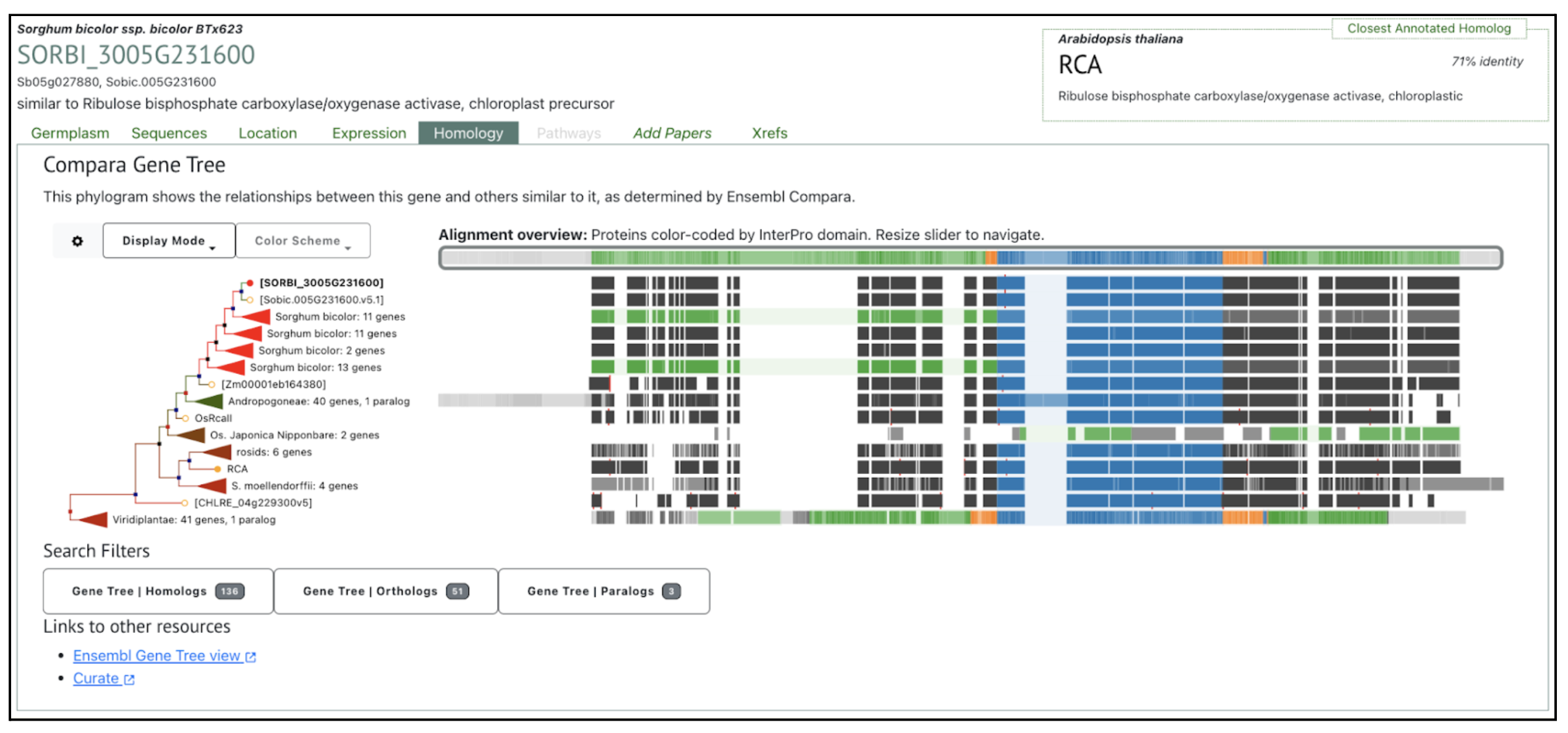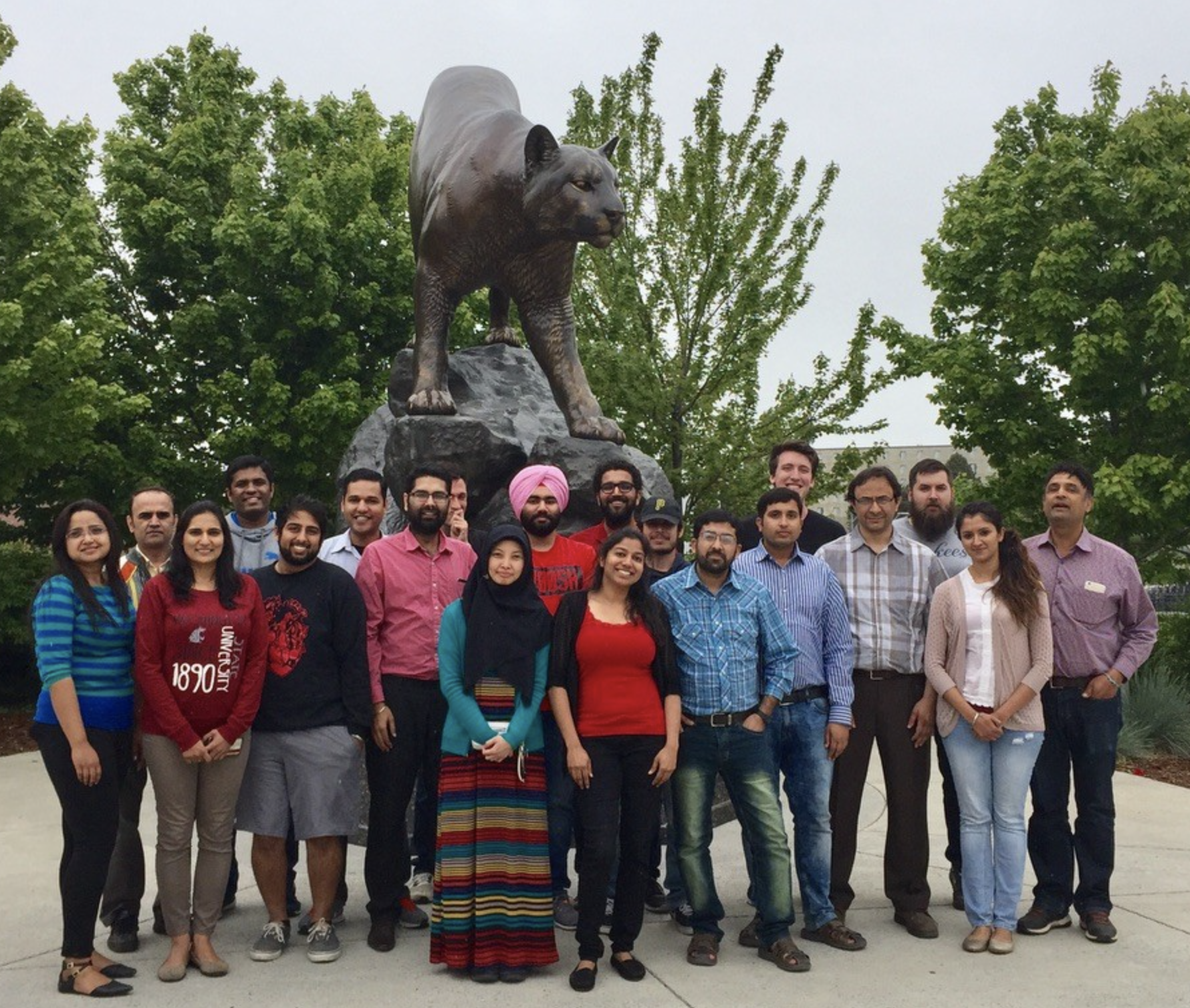Tandem duplication of Rca genes in grasses, combined with transposable element insertions harboring heat shock elements, has driven species-specific adaptations to heat stress, enabling improved thermal tolerance and photosynthetic performance.
Keywords: Cereal crops, Gene duplication, Heat stress, Molecular evolution, Photosynthesis, Regulation of gene expression, Rubisco activase
Our study aimed to investigate the impact of genetic changes in Rubisco Activase (RCA) encoding genes following the evolutionary divergence of various grass species. It is well-established that cereal crops express different RCA isoforms under normal and heat stress conditions. However, the contribution of gene copies to these isoform variations remained unclear. In this study, we analyzed mRNA and protein expression data to demonstrate how tandemly duplicated genes regulate the expression of different RCA isoforms during heat stress in key cereal crops. – Nagarajan
Adaptation to environmental changes often drives evolutionary modifications in organisms through genetic mutations or genome duplications, which serve as a foundation for novel traits. Tandem duplication of Rca genes, essential for Rubisco activation in photosynthesis, is one such event observed in grasses like barley, wheat, and rice. This duplication likely originated in the common ancestor of the Poaceae family after divergence from the Poales order. Comparative analyses conducted by researchers from Washington State University reveal that while one Rca copy retains conservation across species, the other has evolved species-specific functions, including heat stress responses. Notably, the integration of transposable elements (TEs) harboring heat shock elements (HSEs) into promoter regions has likely contributed to the heat-induced expression patterns of these genes, providing a mechanism for thermal tolerance. For instance, wheat and sorghum exhibit distinct Rca isoform expression patterns under heat stress, which may explain their differential thermal tolerances.
The role of Rca genes in heat adaptation is further supported by studies on wild rice species. In Oryza australiensis, the functional Rca1 gene, absent in cultivated rice, is associated with superior thermal stability and photosynthetic performance under high temperatures. TEs containing HSEs appear to be instrumental in shaping these adaptive responses, as evidenced by their presence in promoter regions of various Rca gene copies across cereal crops. These findings underscore the evolutionary importance of gene duplication, promoter diversification, and TE insertions in enabling plants to adapt to environmental stress. This knowledge offers a promising avenue for engineering heat-tolerant crops, with implications for food security in the face of climate change.
SorghumBase examples:
We wanted to explore the Rca gene in other grasses, especially in sorghum. We used the “Rubisco activase” as a keyword to search and explore in SorghumBase (https://www.sorghumbase.org/). The taxonomic distribution of “Rubisco activase” brings up 4 genes in Sbi BTx623 V3 and V5 along with its closest annotated homolog in Arabidopsis with % identity. We selected SORBI_3005G231600 (Sb05g027880, Sobic.005G231600 similar to Ribulose bisphosphate carboxylase/oxygenase activase, chloroplast precursor; 71% identity with its Arabidopsis RCA homolog) to further explore this gene in SorghumBase.

The gene list shows 4 homologous RCA genes in Sbi BTx623 V3 and V5. On the right hand side, you can see the closest annotated homolog in Arabidopsis with % sequence identity.



Reference:
Nagarajan R, Kahlon KS, Mohan A, Gill KS. Tandemly duplicated Rubisco activase genes of cereals show differential evolution and response to heat stress. Plant Mol Biol. 2024 Dec 21;115(1):10. PMID: 39708272. doi: 10.1007/s11103-024-01515-z. Read more
Related Project Websites:
- Kulvinder Gill’s pages at Washington State University:

